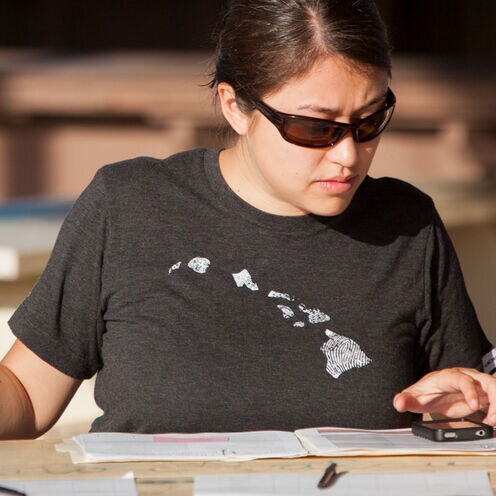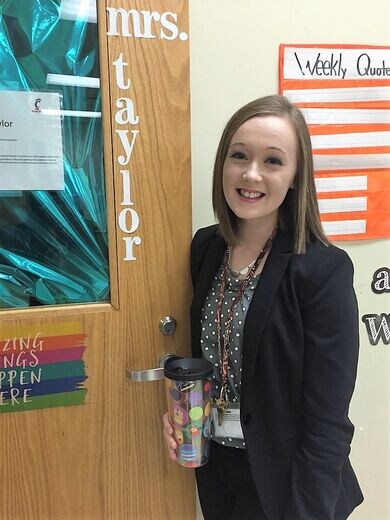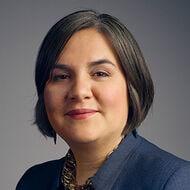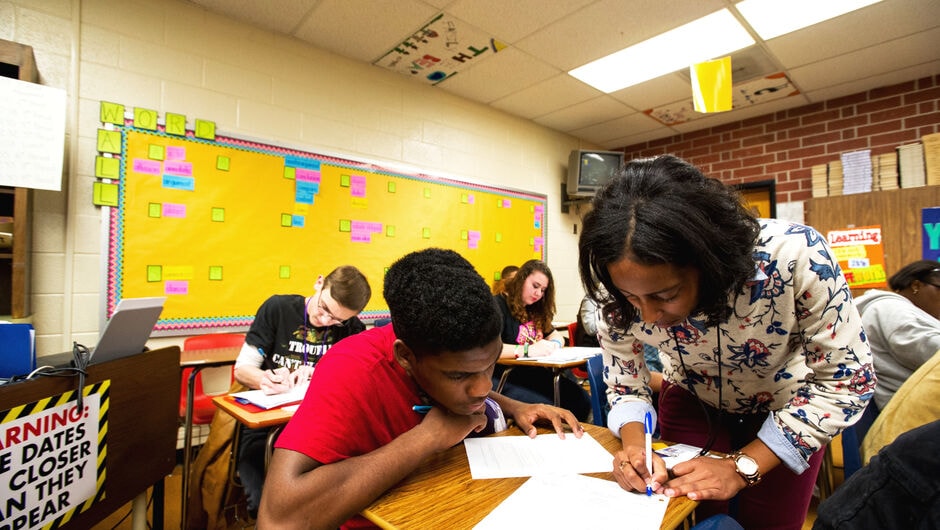
Wellness Tips for a Strong Start to an Unprecedented School Year
Teachers offer advice on wellness—for themselves and their students—as we head back to the classroom (virtual or otherwise) this year.
Instead of decorating classrooms and arranging desks, many teachers are setting up their home offices and figuring how to plan engaging, rigorous virtual lessons. At the same time, those who are teaching in-person or hybrid classes are also getting up to speed on their school’s health and safety protocols.
Meanwhile, students have spent nearly half a year at home, many without all the services and support that they depended on while in school.
Teacher wellness is paramount during an ordinary school year. And wellness practices can look a bit different for everyone and may include mindfulness, eating healthy, physical fitness, spiritual connection, and maintaining social ties, to name a few.
But this year, wellness takes on a whole new dimension as teachers and students are facing unprecedented times: a global pandemic, nationwide protests calling for racial justice, an upcoming election, and more.
So what does it look like to maintain health and resiliency during these trying times? We asked several teachers to share how they are thinking about wellness, both personally and for their students. They offer advice to fellow teachers and explain how wellness can help build stamina for the long-term work of changing the systems that hold students back.
Wellness in the Wake of COVID-19
Many teachers are bringing lessons learned from the previous spring’s school closures into the coming school year. For some, pandemic life and virtual teaching have made it easier to set aside time for personal wellness. By eliminating the daily commute, some teachers found time to prioritize healthy habits such as working out and cooking healthy meals at home.
But working from home—the same place where you sleep and eat—also presents new challenges for maintaining healthy boundaries around work hours. Olukemi “Kemi” Fatade (San Antonio ‘19) teaches sixth grade social studies from their remote classroom and is very intentional about separating work and relaxation at home.
“I refuse to bring my laptop into my bedroom and try not to multitask on things like eating and lesson planning,” Kemi says. “I also try to set a time in the evening for when I stop doing work-related things until the next morning. This part is challenging and tests my self-discipline since I'm used to multitasking at all hours of the day.”
One big consequence of the pandemic is that physical spaces and routines that formed the backbone of wellness—such as going to the gym or a yoga class—are much more restricted. Prior to the pandemic, Caitlin Taylor (Southwest Ohio ‘16) found a gym she really loved and had a solid routine of working out early in the morning before school. Maintaining her physical health helped her have more energy and cope with stress. Now that gyms are closed in her area, she’s had to adapt and bring the gym to her living room.
“I think once I got over that mental hump of thinking maybe things will go back to the way they were before—and realized they're not going to, so we need to change course—that was a really helpful mindset for me,” Caitlin says.
Adapting wellness habits for this new reality is something Grace Colbert (Massachusetts ’18) also had to do. Prior to the pandemic, she wouldn't have described herself as a people-person. But during quarantine, that all changed.
"Not having a roommate and not going to work every day being surrounded by 25 kids—not having any kind of in-person human interaction really takes a toll," Grace says.
Now that her in-person interactions are much more limited, she's even more intentional about building and maintaining relationships as part of her emotional wellness practice. For Grace, this means bringing more people into her "computer community." She's more deliberate about staying in regular contact with important people in her life, whether it's Zoom calls with family and friends or texting with students.
Other teachers shared that they’ve used their time in quarantine to turn inward and build positive relationships with themselves. For Yareli Iglecias (Rio Grande Valley ‘18), that meant journaling, going for walks, or cuddling with her dog.
“I’m learning to love myself—not that I hated myself before—but truly understanding what it is that makes me feel my best,” Yareli says. “I have to cope with it as best as I can. And I'm just learning as I go along.”

Yareli started using Boomerang to send emails to her future self as a way to look back and see that she is making progress in her personal growth, even on bad days.
“Instead of journaling, I'll type out an email to myself and then I'll date it maybe two months from now, a year from now,” Yareli says. “And once I read that email in the future, I'm like, wow, I've grown a lot.”
Taking time to focus on wellness and personal growth takes time and sacrifice. But this kind of personal “hidden” work isn’t always highly accepted in an environment that puts pressure on teachers to be high achievers. For Kemi, that means focusing on sustainability, rather than relentless exceptionalism.
“If we focus too much on the performance aspect of it—how we're going to show up and do all these great things for our kids and we're neglecting ourselves along the way—something's going to falter,” Kemi says. “Trees with shallow roots don't hold up for long when the wind blows. We need to spend time grounding and rooting ourselves so that when we do show up, it's not just beautiful, but it's strong and it's lasting.”
Teachers work hard throughout the year to help students achieve significant academic and broader progress. In this unprecedented time, navigating how to achieve such outcomes can become even more complex. Ramya Ravindrababu (Appalachia ‘18) is coming to terms with what it means to start the new school year without having a real sense of closure from the previous year.

For Ramya, not being able to connect with her students in person is a source of grief that continues to linger.“It's like if you spent an entire year pushing a rock up a hill and then it just rolled back over and flattened you,” Ramya says. One of her wellness practices is to allow herself room to process that grief when these feelings come up.
“I'm not judging myself for still being sad about those things or having a hard time getting out of bed. This is not the time for figuring out how we can be our overachiever selves. This is a time to give ourselves as much time and space as we need to breathe,” she says.
Integrating Students’ Wellness and Academics
Students' mental, emotional, and physical health always matters, and it could be even more of a concern this year. The pandemic has exacerbated issues such as food insecurity and the need for additional family supports for some students and families. Against this backdrop, teachers are also worried about helping kids get caught up academically from last year’s disruptions. Teachers are thinking about how to address these issues as students gear up for new school routines—whether that is at home, back to the school building, or both.
Kemi says the pandemic is “shining a light on just how important student wellness actually is.” And teachers can be powerful advocates for their students. As Kemi plans for back to school this fall, they want to survey students’ families as a way to continue learning about students’ individual needs in light of the pandemic. In the meantime, Kemi continues to focus on empathy.
“A lot of students are having their own existential crises, which is very understandable given everything that's going on around them. So I just try to put myself in their shoes,” Kemi says.
Some teachers are thinking about how to create informal spaces to check in with students and keep a pulse on how they are doing throughout the school year. Ramya will most likely teach remote classes this fall. She is thinking about how to make relationship-building more flexible and sustainable in a virtual setting this year so she can reach as many students as possible.
“I don't have all the answers right now,” Ramya says. “But I think one of the things that's going to be important to kids is being able to connect with their teachers outside of academic time. So setting up office hours and being like, hey, if you just want to be on a virtual screen with another human being and it's not academic-related, that's fine. If you have questions and you need tutoring, that's fine. And if you want to invite a couple of friends to this call, who you haven't seen in six months, that's fine too.”
Student wellness and mindfulness practice can also happen during class time. While teaching a remote third-grade class last year, Grace intentionally integrated wellness checks into her lessons, taking 10 minutes to check-in with students before starting in on math or writing.
“Regardless of what the school format looks like in the fall, I think wellness and relationships come first,” Grace says. “We're going through this really, really hard thing. And just recognizing that this is weird for everyone and really ask—how are you doing?”
Before the pandemic, Yareli would hold gratitude Fridays where students would go outside and write one thing they were grateful for on a poster. Last spring she adapted this ritual for the virtual classroom and hopes to bring it back this fall.
“I started doing gratitude Fridays on a Google form,” Yareli says. “I would ask students things like, who is a friend that you're grateful for? What is the name of one teacher who made you feel safe? What is one activity that brings you joy? It’s one way for me to get to know them a little bit better, but also a way to have them realize that within the bad there's always some good.”
Caitlin knows her students have been processing trauma over the past six months. As she thinks about this school year, she’s creating a classroom culture that encourages students to prioritize their wellness and build healthy habits. In the end, she hopes students will develop a community mindset around wellness and see how it contributes to the greater good.

“I know that we'll probably be required to have masks, to be socially distant, and to clean our area a lot,” Caitlin says. “So I think the more pride we can instill in that—we are taking care of ourselves and others when we do these things—that makes us better for everyone.”
Wellness & Systems Change
Teaching on an ordinary day is challenging. But teaching in the midst of a pandemic presents a new level of demands. Teachers are grappling with the staggering impact that COVID-19 has had on existing equity gaps in the classroom, particularly for students of color. In parallel, nationwide protests for racial justice call on all of us to reckon with our country’s legacy of systemic racism.
As teachers think about their role in leading systems change, wellness is not only a form of self-preservation but a source of strength and resiliency for overthrowing systemic injustice and oppression. Wellness requires us to look inward, to center the humanity of ourselves and recognize the humanity of others.
“These systems that we are coming up against—white supremacy, sexism, racism, homophobia, transphobia—these have existed for a long time,” Kemi says. “And they're rooted in such darkness that all humans are capable of having, such as selfishness, greed, and envy. These are all things that the systems feed off of. And if we're not working on these things within ourselves, they will continue to show up regardless of our best efforts and intentions.”
Kemi suggests that wellness can offer a powerful antidote.
“If we are practicing mindfulness and taking care of ourselves, this self-work will help to inform the actions that we need to take to effectively bring about systems change. So wellness as it's connected to systems change, those two cannot be separated from each other,” Kemi says.
For Grace, the sustainability of the teaching profession depends on wellness. Too often teachers experience burnout, resulting in high turn-over, especially in schools where resources are limited. And now, in the time of COVID-19, the stakes for teachers are even higher.
“It’s like that saying, put your oxygen mask on first before you do it for others,” Grace explains. “It's one thing to say it and entirely another to follow through and take strides towards improving my own wellness. It's so easy to just keep doing our jobs and push through.” Grace says the risk of neglecting wellness is that many teachers end up leaving the classroom.
Focusing on self-work enables teachers to stay positive while navigating these pressures over the long term and day-to-day. For Yareli, modeling this behavior is important for her students, who in turn carry these habits with them into their own lives.
“I need to work to change what's in me so that it's not affecting myself or others,” Yareli says.” All the changes that we're trying to do, we have to start with ourselves first because every single thing we do, our kids learn from it. We have to really work within ourselves so that when we are squeezed, there isn’t anything that could hinder their learning.”
This article includes ideas to support staff, teachers, and student wellness. Users are responsible for researching resources and professionals to find the best supports to meet their needs. Teach For America does not endorse these particular services in any way. The resources linked within are not meant to replace or confuse any guidance teachers and corps members are receiving from their districts, administrators, or employers. Ultimately, corps members with Teach For America must adhere to the policies and guidance from their placement schools.
Sign up to receive articles like this in your inbox!
Thanks for signing up!
Content is loading...






